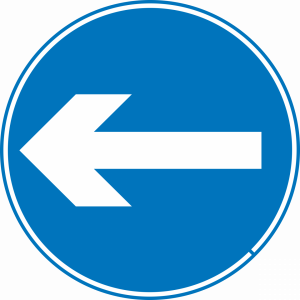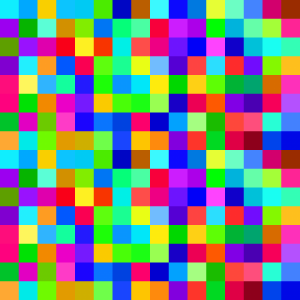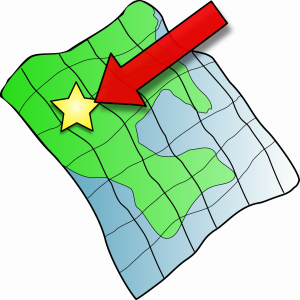Activity 1 – Picture Maps.
Focus – I can describe the position of a person or object in my own way.
Resources – Paper and pens.
Work together to make a picture map of a room in your home. Start by drawing the outline of the room’s floor (e.g. a rectangle) and indicate where the key objects are, e.g. chair, table, TV etc. Imagine you are a bird or fly near the ceiling, and try to imagine what it can see.
Activity 2 – Shoes and Gloves.
Focus – I can describe the position of a person or object in my own way.
Resources – Paper and pens.
Draw a pair of shoes or gloves (either your own, or a pair they would like to have) and label them left and right as appropriate.
Activity 3 – Robot Directions.
Focus – I can give and follow directions using simple language of movement and can record these in my own way.
Resources – Paper and pens.
Draw a simple plan of a room at home (e.g. kitchen, garden, bedroom). They write directions to program a robot to go from one place in the room to another (e.g. from fridge to sink). Think carefully about the way you are facing when ready to move.
Activity 4 – No Directions.
Focus – I can give and follow directions using simple language of movement and can record these in my own way.
Resources – Paper and pens.
Imagine what life would be like without directions. Discuss and write or draw about some situations which would be very difficult if there were no direction words.
Activity 5 – Design Instructions.
Focus – I have explored different grid systems and can use them to describe and locate positions.
Resources – Pens and squared paper (from school).
Work together to create a simple design on a grid of squared paper by colouring squares. Decide how big
and complicated to make the design. Then write instructions for creating this design, for example, colour B6 blue.
Activity 6 – Parking Lot.
Focus – I have explored different grid systems and can use them to describe and locate positions.
Resources – Pens and squared paper (from school).
Draw an 8 × 8 grid to represent a car park which is used by different vehicles. A lorry takes up 4 squares, a car takes up 2 squares, a bus takes up 4 squares and a bike takes up 1 square. Decide where to park some of these vehicles and record the grid references for each vehicle.
Activity 7 – Shape Codes.
Focus – I can give and follow directions using an extended range of vocabulary and can record these in a variety of ways.
Resources – Pens and squared paper (from school).
Draw (on squared paper) an outline of a shape involving only right or left turns, for example, a cross. Write the
instructions for drawing this in code form, for example, you could write ‘forward 5’ as F5. Swap codes with
and try to draw each other’s shapes.
Activity 8 – Directions in my House.
Focus – I can give and follow directions using an extended range of vocabulary and can record these in a variety of ways.
Resources – Pens and paper.
Discuss together a simple journey you make at home, say from the kitchen to your bedroom. Record how you make
this journey. Start at the kitchen door and turn left. Walk six steps. Turn right and go through the door. Swop instructions and ask the other person to try them out.
Activity 9 – Compass Directions.
Focus – I can use the compass points to help me locate positions and follow directions.
Resources – Pens and paper.
The whole family can work together, over the course of a week, to record where they hear or see compass directions mentioned (e.g. TV, newspaper article). Bring in to school to share.
Activity 10 – Directions at Home.
Focus – I can use the compass points to help me locate positions and follow directions.
Resources – Pens and paper.
Work together – take turns to guess approximately where N, S, E, W are in relation to you house, using the
knowledge that the sun rises in the east and sets in the west. Use this to record a route from one room to another
using compass directions and the number of steps to take.
Activity 11 – Right Angle Turns.
Focus – I have explored how to use right angles to help me describe turns.
Resources – None
Work together to identify and record where you see right angle turns around the home, for example,turning the dishwasher dial from 0 to position 2.
Activity 12 – Right Angles at Home.
Focus – I can use my knowledge of right angles to help me compare and describe the angles in 2D shapes.
Resources – paper and pens.
Use the corner of paper as an angle tester. Test and record (by drawing or writing about) five objects which have right angles in them.
Activity 12 – Buildings.
Focus – I can use my knowledge of right angles to help me compare and describe the angles in 2D shapes.
Resources – paper and pens.
Draw an imaginary building which has walls, windows and doors at angles other than right angles and imagine what it would be like to live in such a building. Discuss your thoughts. What would happen if shelves weren’t put up at right angles to the walls?
Activity 13 – Buildings.
Focus – I can record and interpret a route or journey using pictures, symbols and maps.
Resources – paper and pens.
Work together to create a route map of the way to or from school. Show any points where a left or right turn is needed. Encourage adding detail to this turn, for example, at the mini-supermarket turn right.
Activity 14 – Fantasy Map.
Focus – I can record and interpret a route or journey using pictures, symbols and maps.
Resources – squared paper (from school) and pens.
Draw a map or plan showing a place or room or house to create your own fantasy place. Make up a key to explain any
symbols you invent. Explain your map to a partner.















